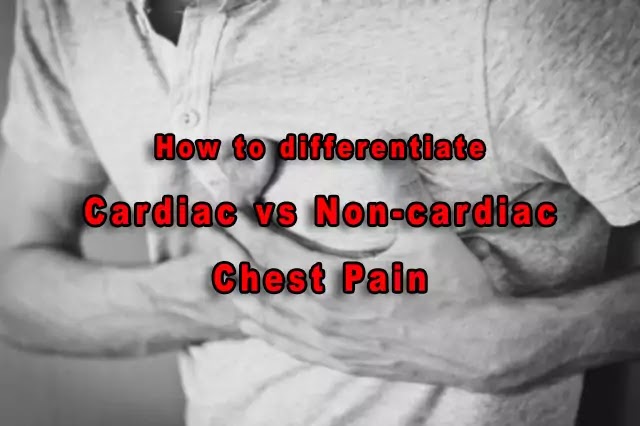Whenever anyone suffers from chest pain they become anxious or confused about whether it is cardiac chest pain that is coronary pain also known as angina or it is non-cardiac chest pain. If there is cardiac chest pain then the cardiac physician should be consulted immediately for further care.
Cardiac chest pain must be differentiated from other types of chest pain such as pleurisy, gallbladder stone or inflammation, hiatus hernia, muscular, anxiety, etc.
Table of Contents
7 features to differentiate between cardiac chest and non-cardiac chest pain
There are different points or features that help to differentiate between cardiac and noncardiac chest pain symptoms. These features are described below.
Duration:
In cardiac ischemic chest pain duration of pain is usually 2 to 5 minutes. But it may last for 15 to 30 minutes also. While in noncardiac chest pain the pain may last for minutes to hours.
Location:
Cardiac chest pain is usually located precordial or substernal region. But it may also be diffuse. While non-cardiac chest pain is more peripheral, epigastric, and localized.
Radiation:
Cardiac ischemic pain may radiate to the left shoulder, ulnar aspect of the arm and forearm, and neck. While noncardiac chest pain usually radiates to the left lower chest or other region or there may not be any radiation.
Character of pain:
Squeezing, choking, pressing, or tightness is characteristic of cardiac ischemia. Sharp, shooting, lancing, catching, or dull ache is characteristic of noncardiac chest pain.
Precipitating or aggravating factors:
Exertion and/or emotion may increase the cardiac chest pain. While noncardiac pain may not be related to exertion. It may be provoked by food, posture change, or respiration.
Relieving factors:
Rest and nitrates may relieve cardiac chest pain. Food, lying on the same side may relieve non-cardiac pain. It may or may not respond to nitrates.
Associated symptoms:
Perspiration, palpitation or syncope may be associated with cardiac chest pain. While in noncardiac pain respiratory, gastrointestinal, or psychological symptoms are associated according to underlying cause.
Note: This article is for information purposes only. It is not a substitute for legal advice, diagnosis, treatment, etc. Please consult your doctor before taking any action.

